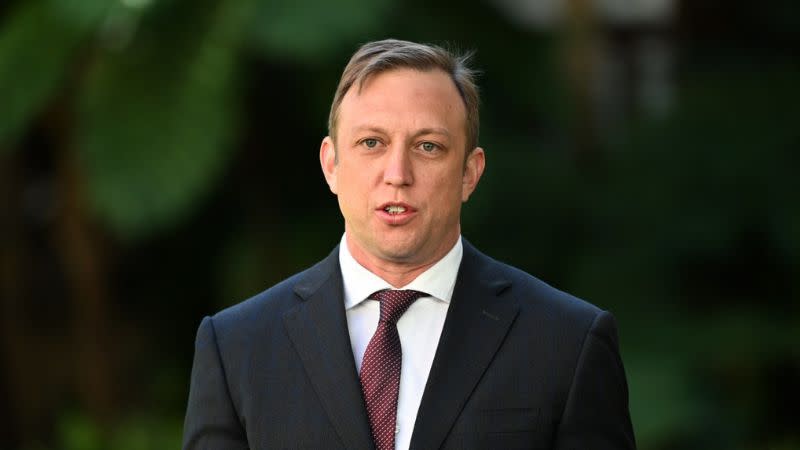Resources
Newsletter
Stay up to date and with the latest news, projects, deals and features.
Subscribe
Housing incentives, infrastructure costs and stamp duty are all ammunition after the release of the Queensland Budget during an election year.
In an effort to speed up the delivery of new homes in Queensland, the State Government plans to foot the application fees and infrastructure costs on eligible residential, mixed-use and retirement projects.
The $350-million Incentivising Infill Development Fund, open now for applications, is for market-ready projects that increase housing density in well located urban areas that were underutilised or vacant.
However, this is a smidgeon of the $3.5 billion in transfer duty the Queensland Government took during the past three years.
The infill fund was revealed by Premier Steven Miles at a Property Council of Australia event just before the handing down of the Budget on June 11.
The fund comes after a fast-track application process was announced in April through the new State Facilitated Development team.
It has received more than 145 expressions of interest, with projects varying in scale from 8 to 2500 homes.
A goal of a million new homes by 2046 has been set by the Queensland Government, equal to more than 45,000 a year with 34,500 of those to be in south-east Queensland.
Sixty per cent of these new homes should be apartments in the region. Between 2020 and 2023, 2000 apartments were delivered.
Almost 3000 are under construction this year and 3500 are expected next year, according to an Urbis and PCA report.
The Incentivising Infill Development Fund is expected to boost that number.

Eligible projects must contribute to affordability, be a material change of use or reconfigured a lot, not luxury and at the pre-construction stage.
It also includes residential within mixed-use projects and accommodation for workers or tertiary students, and is backdated to February 3.
In his response to the Budget, opposition leader David Crisafulli revealed the Coalition plans to increase housing supply.
They are targeted specifically towards first home buyers, and cut the current housing target by two years.
The LNP’s Securing Our Housing Foundation package would abolish stamp duty for first home buyers and increase the existing home threshold to $700,000 while allowing people to rent out a room in their home.
A shared equity scheme to help first home buyers to save for a deposit and a 10,000 home partnership with the community housing sector is also on the cards.
“We will create a blueprint for a million extra homes by 2044, fix the regional plans and speed up the approval process,” the Member for Broadwater told parliament on June 13.

The Queensland election has been called for October 26.
Retirement Living Council executive director Daniel Gannon said they were urging retirement village developers and operators to utilise the new funding.
“Across Queensland, there are more than 280,000 people over 75 living in dwellings that are oversized for their needs, which makes rightsizing an important piece of the housing puzzle,” Gannon said.
“Larger homes can also increase health risks as people age, with most cases of falls in older people occurring at home.
“This is an important transition because when an older person sells the family home and moves into a house that is more suitable for their ageing needs, in a retirement village, for example, it frees up housing stock for young people, couples and growing families.”
Queensland Housing Supply Expert Panel member Natalie Rayment said building in town rather than on the outskirts had financial and environmental benefits.
“One of the drivers for sprawl in the first place was that land was generally cheaper on the periphery of town, so infrastructure was highly subsidised and those costs were not clearly tied to the cost of a house,” Rayment said.
“Now, ongoing maintenance of these developments is becoming a growing burden for all tiers of government.
“Add that to the cost of living and reliance on motor vehicles in areas where you are not able to walk to things so easily, the living and environmental costs of urban sprawl really start to add up.”
PCA Queensland division executive director Jess Caire said their research showed the taxes, fees and charges that made up a third of the price of a new home in Queensland were yielding significant revenue for the government.
“Over the past three years, the government has received an additional $3.5 billion more than they budgeted in transfer duty and land tax alone, representing a 29 per cent increase in receipts over the forecast,” Caire said.
“To put this figure into perspective, the seven new satellite hospitals in Tugun, Redlands, Eight Mile Plains, Bribie Island, Caboolture, Kallangur and Ripley currently being delivered by the government are budgeted to cost $377 million.
“It’s very clear that these taxes are in surplus and can be reduced to help bring an end to the housing crisis and restore affordability.”
Coming events
Build-to-Rent Summit | Thursday 20 June (Melbourne)
Are you a TUD+ member? Claim your discount by clicking here